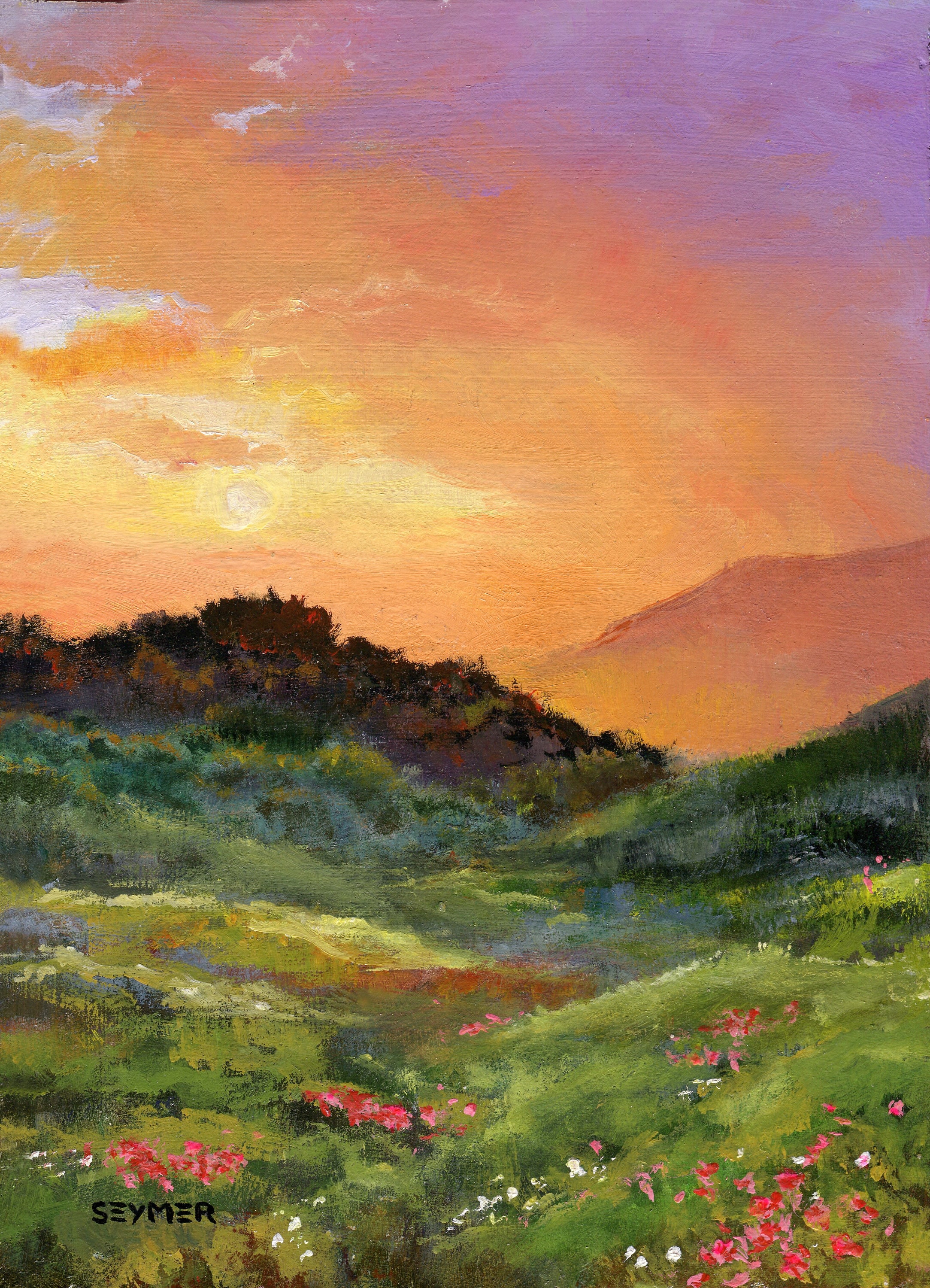Explore Curated Assortments of Oil Paintings for Sale
Checking out All Regarding Oil Paintings: A Guide to Recognizing Their Elegance and Value
Oil paintings have actually astounded target markets for centuries, using a peek into the artistic proficiency of numerous periods. Their rich history is linked with cutting-edge methods and profound psychological expression. Comprehending the materials and methods behind these art work can boost recognition. Furthermore, the market for oil paints provides opportunities for collectors and investors alike. As one explores this interesting globe, the inquiry occurs: what makes an oil paint absolutely important?
The Background of Oil Painting: A Trip With Time
Oil painting has roots that date back to old times, it genuinely flourished throughout the Renaissance, when musicians discovered its versatility and rich shade capacity. Early instances can be traced to the 7th century, with methods developing significantly throughout cultures. The medium ended up being prominent in Northern Europe in the 15th century, especially through the works of musicians like Jan van Eyck, who originated its usage for comprehensive realistic look and vibrant shades. This period marked a separation from tempera paints, permitting better depth and structure. As oil paint spread, it influenced numerous musicians, resulting in work of arts by prominent figures such as Leonardo da Vinci and Rembrandt. The medium's tradition proceeds, forming the art world well into modern times.
Understanding Oil Paints: Materials and Techniques
As musicians discover the globe of oil paints, they encounter a varied array of materials and methods that specify this tool. The primary components of oil paint include pigments, which offer shade, and drying out oils, such as linseed, that bind the pigments and promote application. Various ingredients can modify the paint's texture and drying time, improving versatility. Techniques like glazing, where transparent layers are developed, and impasto, which involves applying thick paint, enable various aesthetic results. In addition, the usage of brushes, scheme blades, and also fingers can produce special structures and surfaces. Comprehending these techniques and materials enables musicians to totally share their creative thinking and attain the desired impact in their art work.
The Function of Shade in Oil Paints
Color plays a pivotal role in oil paintings, affecting both visual allure and emotional resonance. Understanding color concept basics, consisting of the partnerships between shades, can improve a musician's capability to share state of mind and ambience. Additionally, grasping color blending strategies enables for better deepness and richness in a painting's palette.

Shade Theory Fundamentals
Comprehending color concept is vital for artists dealing with oil paints, as it develops the foundation for producing visually interesting and harmonious compositions. Shade theory encompasses the research of exactly how colors connect, the color wheel, and the partnerships between key, secondary, and tertiary colors. Musicians use complementary shades to enhance contrasts and develop focal points, while similar colors advertise unity and cohesiveness within a piece. Furthermore, the principles of great and warm shades influence the assumption of depth and area in a painting. Realizing these principles permits artists to control shade efficiently, leading the audience's eye and connecting their intended message. Proficiency of color theory inevitably improves an artist's capacity to communicate feelings and ideas via their work.
Psychological Impact of Shade
The psychological impact of shade in oil paintings plays a crucial function in just how audiences attach and perceive with artwork. Colors evoke certain sensations and state of minds, influencing the audience's mood. For example, warm shades like oranges and reds can create a sense of warmth and energy, while amazing tones such as blues and greens frequently evoke calmness or self-contemplation. Artists purposefully pick shade palettes to enhance narrative elements, directing the audience's emotional journey. The saturation and comparison of colors even more enhance these effects, drawing interest and developing emphasis. Eventually, the interaction of shades in oil paints not only boosts their visual allure yet additionally acts as an effective medium for emotional expression, enriching the audience's experience and interpretation.
Color Mixing Techniques
While numerous elements of oil painting add to the total make-up, grasping color blending strategies is essential for attaining preferred impacts and depth. Shade blending can be approached through numerous approaches, including the additive and subtractive processes. Additive mixing entails incorporating shades of light, while subtractive mixing depends on pigments, where colors mix to develop brand-new tones. Musicians usually make use of a minimal scheme to produce unified works, comprehending the partnerships in between primary, secondary, and tertiary colors. Techniques such as glazing and scumbling additionally enhance deepness and luminosity. By masterfully mixing shades, a musician can evoke emotions, develop prime focus, and accomplish a feeling of realism, inevitably elevating the painting's emotional and visual impact.
Famous Oil Painters and Their Iconic Functions

Renowned for their mastery of color and technique, oil painters have developed some of the most renowned art work in background. Prominent musicians like Vincent van Gogh astounded target markets with his stirring brushwork in "Starry Evening," while Claude Monet's "Impression, Sunrise" prepared for Impressionism. Leonardo da Vinci's "Mona Lisa" stays a long-lasting sign of creative wizard, showcasing his ability in capturing human expression. Rembrandt's "The Evening Watch" shows his cutting-edge usage of light and shadow. Other significant numbers consist of Pablo Picasso, that transformed contemporary art with his vibrant experimentation in works like "Les Demoiselles d'Avignon," and Georgia O'Keeffe, whose vivid depictions of blossoms and landscapes assisted specify American modernism. Each artist's distinct design contributed significantly to the oil painting landscape.
Just how to Evaluate the Top Quality of an Oil Paint
Examining the quality of an oil painting entails a cautious evaluation of craftsmanship strategies, as well as an evaluation of color and make-up. Observing brushwork, layering, and the application of paint can expose the artist's ability level. Additionally, the interaction of colors and the overall setup of aspects contribute substantially to the painting's visual value.
Assessing Workmanship Techniques
A meticulous analysis of craftsmanship strategies is vital for identifying the quality of an oil painting. Evaluators ought to initially examine the application of paint; thick, distinctive brushstrokes may suggest a skilled hand, while excessively uniform applications could show a lack of deepness. oil paintings for sale. The layering technique is likewise vital; the existence of lusters and varied density can enhance brightness and complexity. Furthermore, the high quality of the materials used, such as the canvas and pigments, plays a substantial role in sturdiness and total aesthetic. Focus to information in elements like sides and shifts in between shades reflects the artist's commitment to their craft. Inevitably, these techniques contribute to the paint's psychological impact and market value, functioning as indications of the artist's skill and intent
Assessing Color and Structure
While evaluating the top quality of an oil painting, one have to focus on the interplay of color and make-up, as these components are fundamental to the art work's total influence. Shade options can evoke feelings and develop mood; for that reason, the artist's combination must be examined for harmony and contrast. A well-balanced composition directs the audience's eye and creates a sense of unity. Artists typically utilize methods like the policy of thirds or leading lines to improve click here visual rate of interest. Furthermore, the use of light and shadow can include deepness, boosting the three-dimensionality of the paint. Ultimately, a successful oil paint weds shade and make-up, engaging the viewer and inviting a much deeper admiration of the musician's vision and method.
Caring for and Preserving Oil Paintings
Correct treatment and conservation of oil paintings is necessary for preserving their stability and longevity. To protect these art work, it is crucial to show them away from straight sunshine, which can create fading and discoloration. Preserving a secure atmosphere with controlled temperature and moisture further help in preventing damages. Cleansing must be done delicately making use of a soft, dry cloth, staying clear of any severe chemicals that could hurt the paint or varnish. Regular inspections for indicators of degeneration, such as flaking or splitting, are recommended. When keeping or transferring oil paints, proper extra padding and framework are essential to stay clear of physical damage. Eventually, attentive care contributes to the aesthetic charm and value of oil paints gradually.
The Market for Oil Paints: Spending and gathering
Understanding the marketplace dynamics for oil paintings is important for financiers and collectors alike. The value of these art work is affected by different factors, consisting of the musician's reputation, historical relevance, and current trends. Collection agencies often seek pieces that reverberate directly while taking into consideration prospective recognition in value. Public auctions and galleries act as main locations for trading, with rates varying based upon demand and rarity. Investing in oil paints needs study into the marketplace, along with an understanding of authenticity and provenance. In addition, arising musicians might supply opportunities for significant returns, while established names can command high prices. In general, a critical method to accumulating can yield both visual satisfaction and economic incentives.

Frequently Asked Inquiries
What Are the Ecological Influences of Oil Paint Products?
The ecological influences of oil painting products include the release of unpredictable natural substances (VOCs), hazardous waste generation, and source removal for pigments. These factors add to pollution and environmental degradation, increasing issues amongst ecologically aware musicians and consumers.
How Do Various Canvases Influence Oil Paint Outcomes?
Various canvases affect oil painting results considerably. Absorbency, surface area, and appearance high quality can alter paint application, drying out times, and shade vibrancy. Artists commonly choose specific canvases to achieve desired effects and enhance their imaginative expression.
Can Oil Paintings Be Restored if Damaged?
Oil paints can indeed be restored if harmed. Professional conservators utilize various strategies to fix splits, clean surface areas, and address discoloration, making sure that the artwork preserves its initial charm and value for future generations.
What Are the Indicators of an Original Oil Paint?
The indications of an original oil painting consist of visible brush strokes, texture variants, and an unequal canvas weave (oil paintings for sale). In addition, credibility may be validated with provenance, trademarks, and the existence of a varnish layer distinct to oil tools
Exactly How Has Technology Influenced Modern Oil Paint Techniques?
Technology has actually considerably affected modern oil painting strategies by introducing electronic tools for preparation, enhanced materials for appearance and longevity, and on-line systems for sharing and marketing art, consequently broadening artists' creative possibilities and target market get to. Oil painting has origins that date back to ancient times, it genuinely flourished during the Renaissance, when musicians discovered its adaptability and rich color possibility. The psychological impact of shade in oil paints plays an important function in how customers attach and regard with artwork. While numerous facets of oil paint contribute to the overall make-up, grasping color blending strategies is important for attaining desired impacts and deepness. Assessing the high quality of an oil paint entails a careful assessment of craftsmanship methods, as well as an evaluation of shade and make-up. While evaluating the quality of an oil painting, one need to concentrate on the interaction of shade and make-up, as these components are fundamental to the art work's total impact.